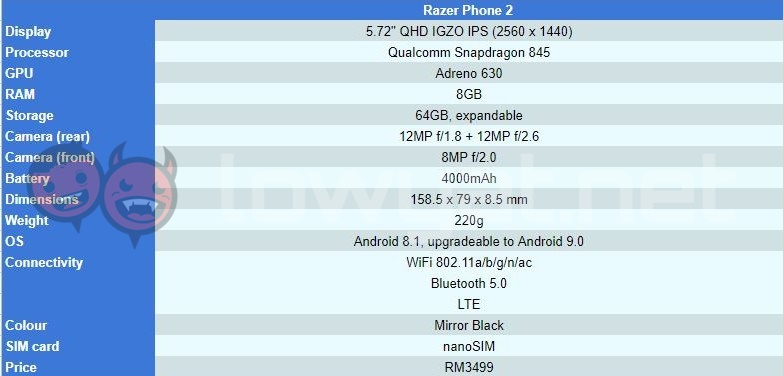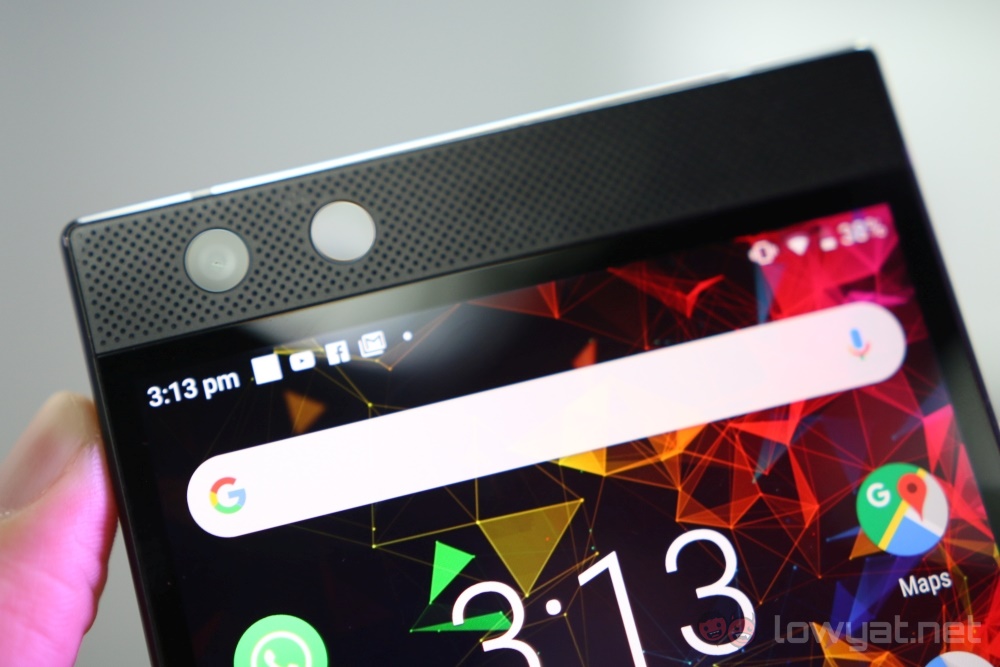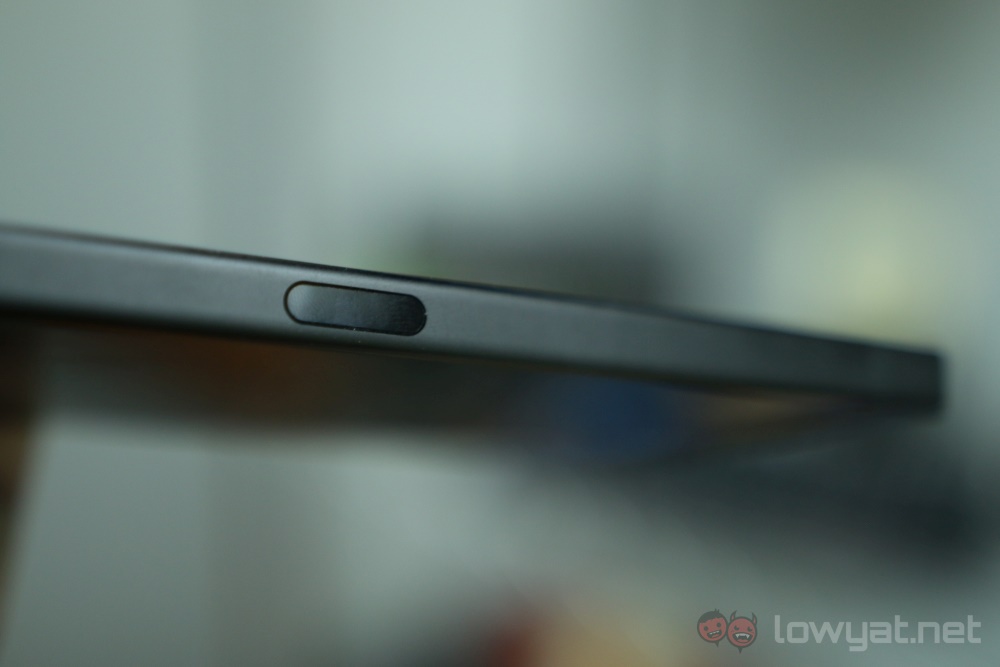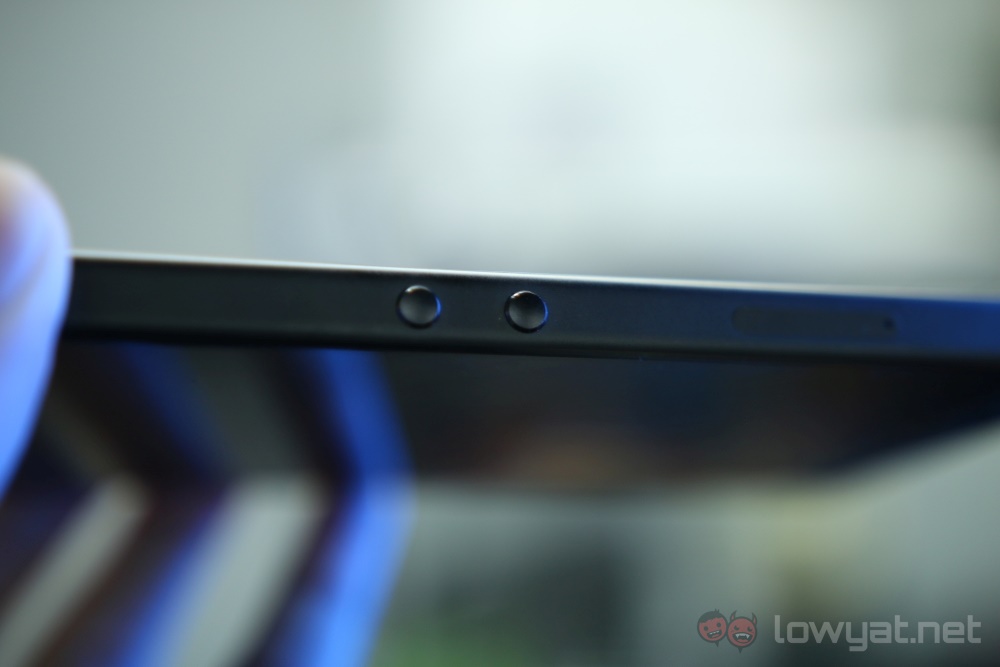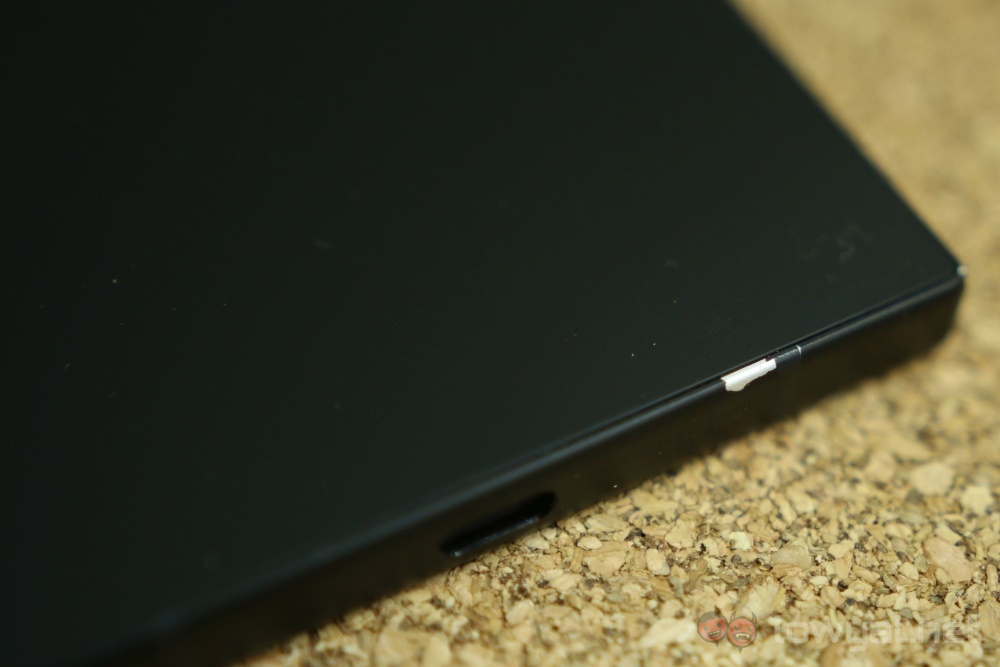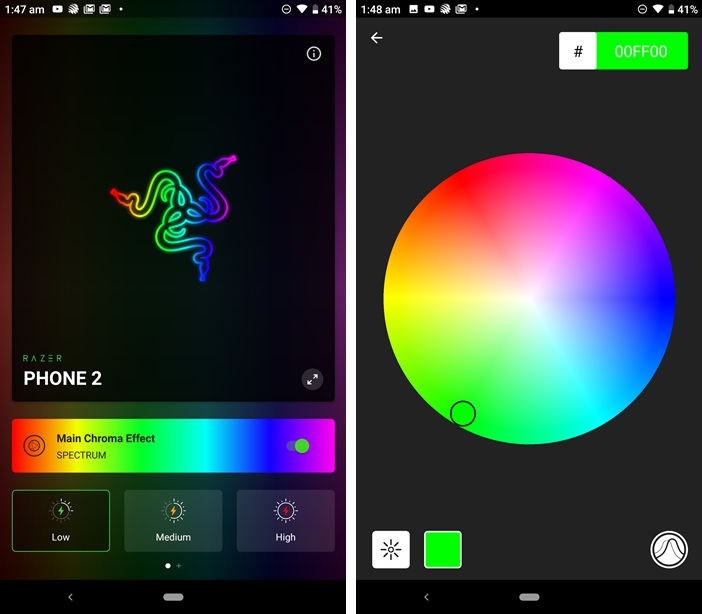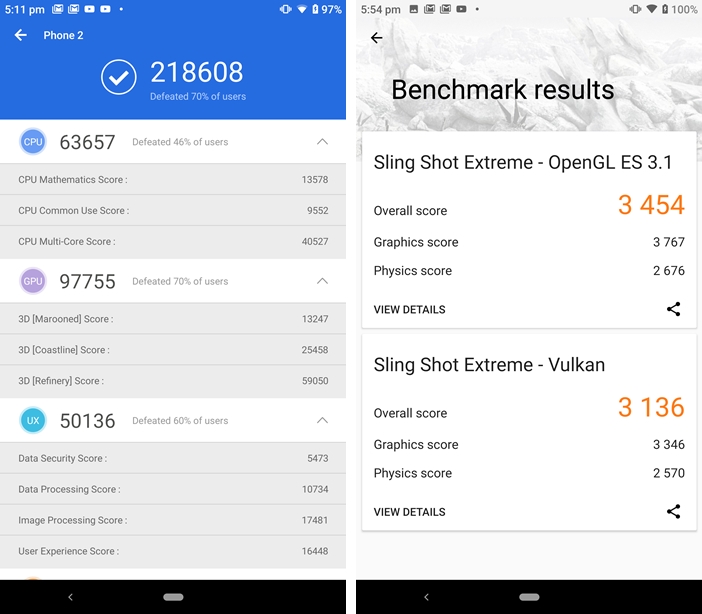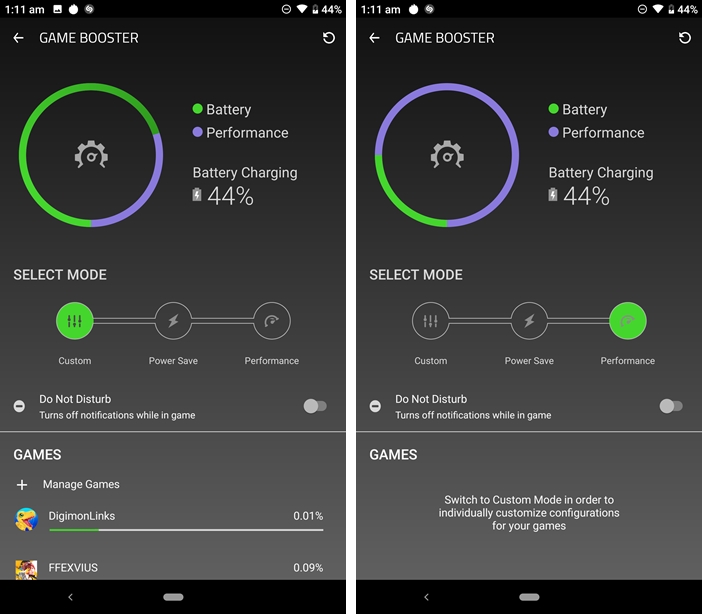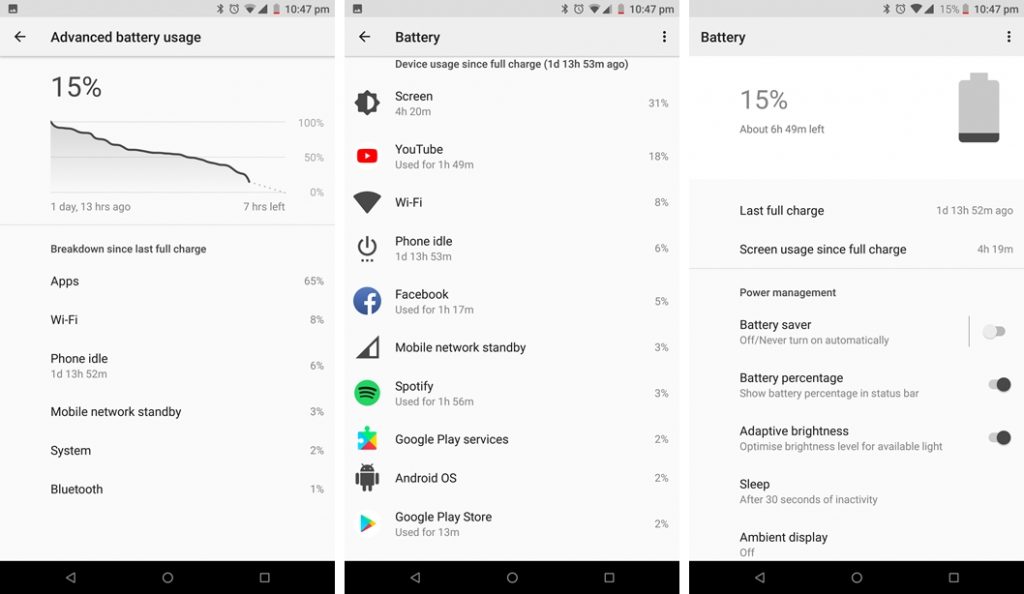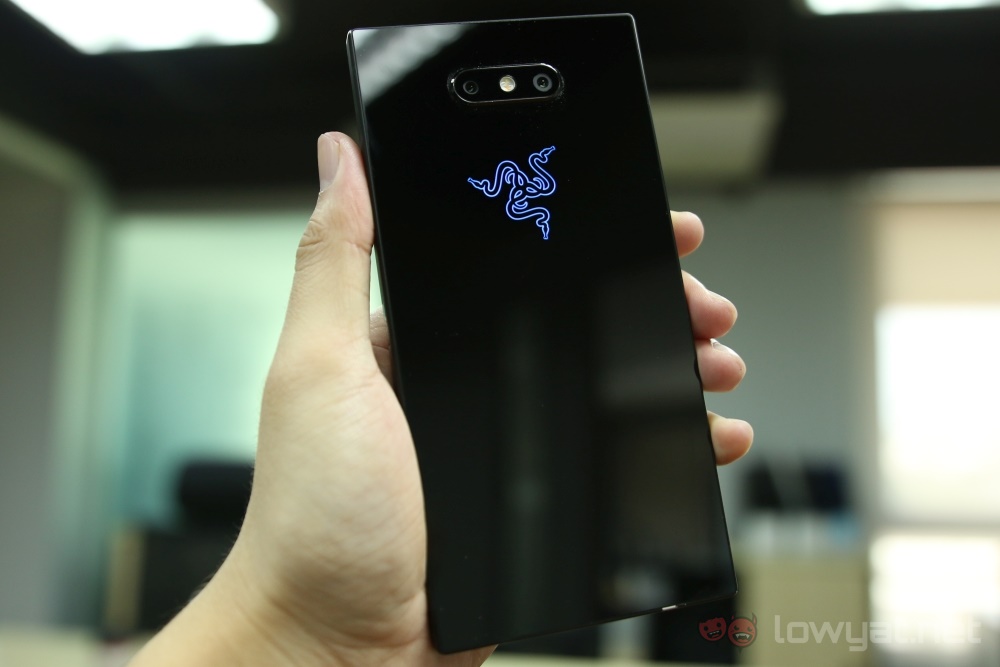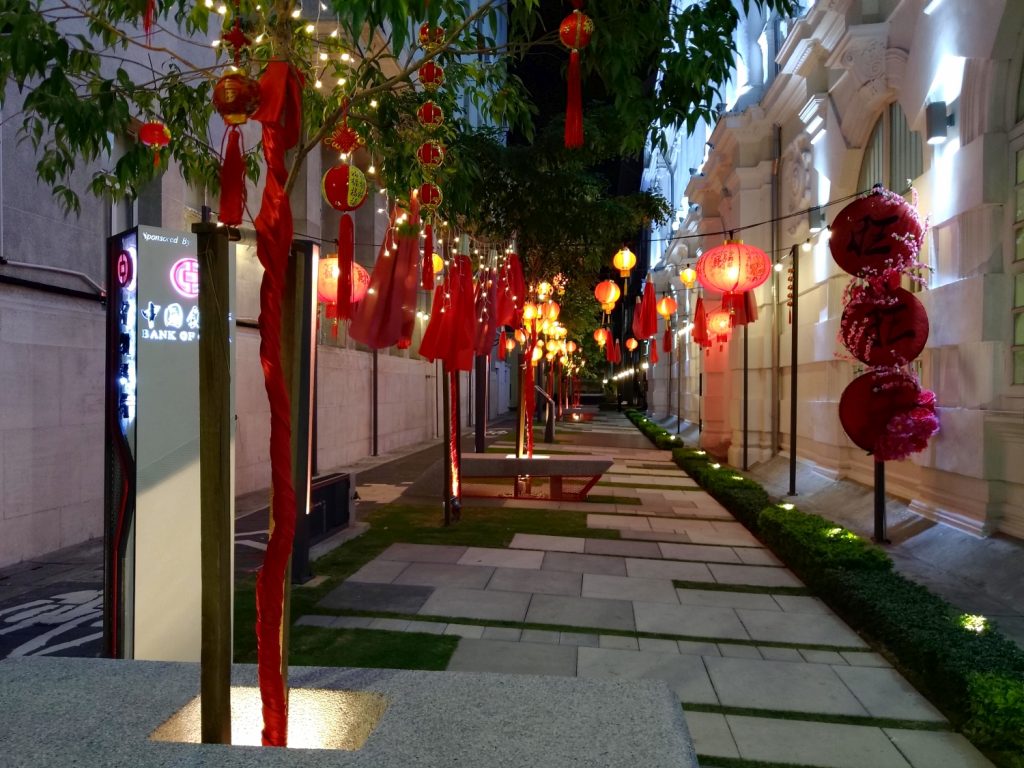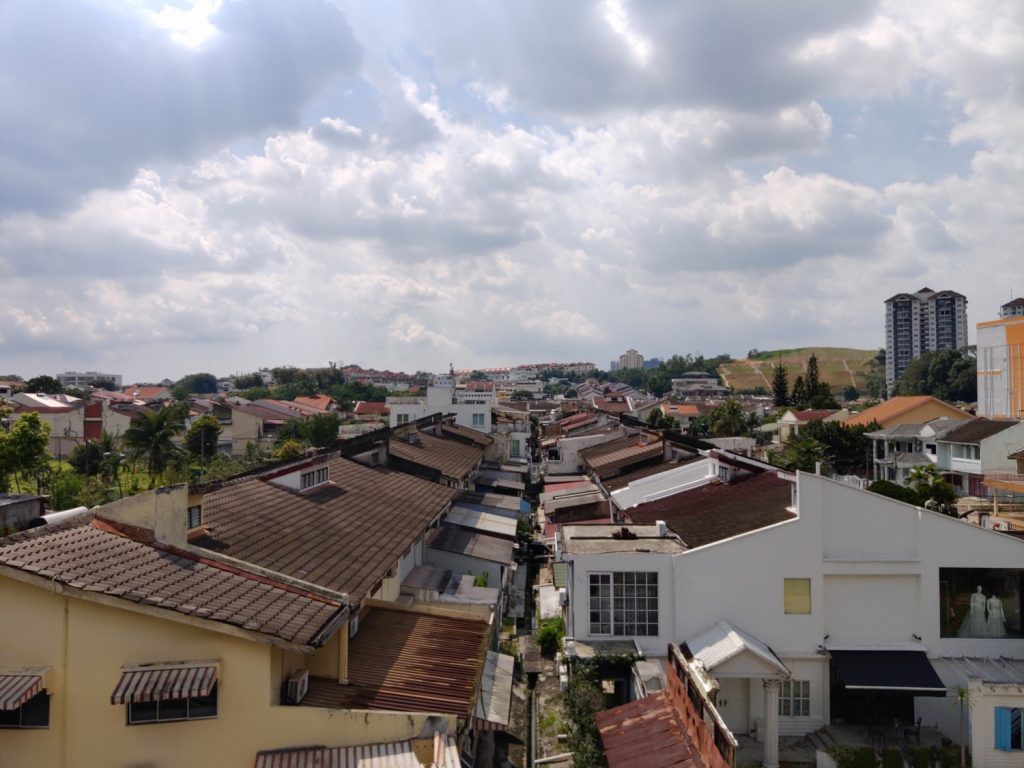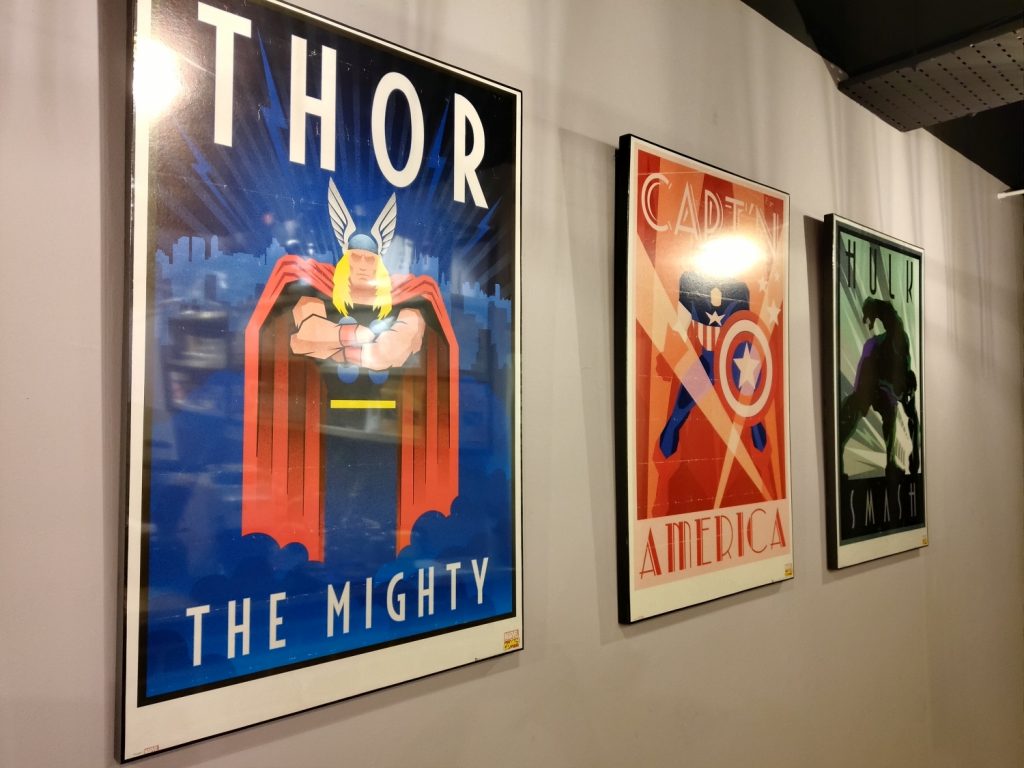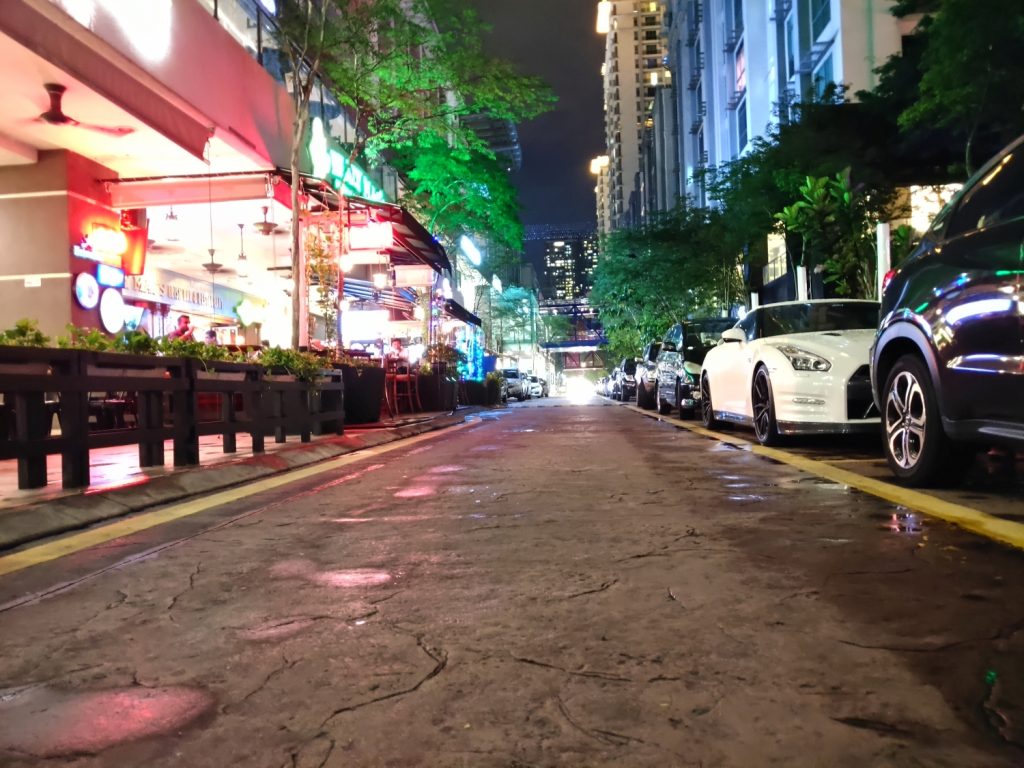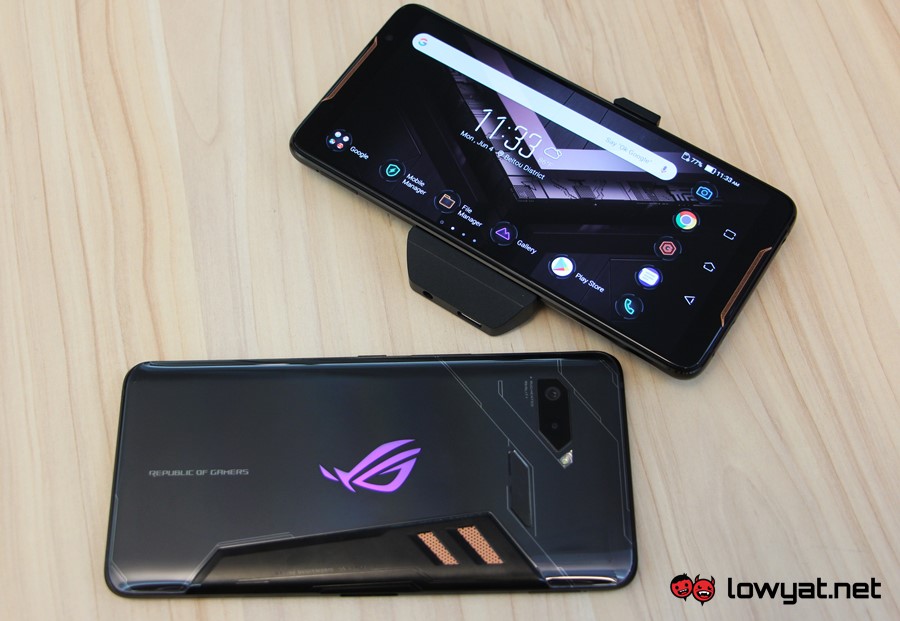But before we worry about the future, I finally myself asking that most important of questions; What is it like to live with the Razer Phone 2?
Specs
The Razer Phone 2 comes with a Qualcomm Snapdragon 845 SoC, 8GB RAM and 64GB of non-expandable storage. The battery is rated at 4000mAh, and like its predecessor, the 5.72-inch 1440p display has a maximum refresh rate of 120Hz. The rear camera is a pair of 12MP shooters, while the front-facing camera is an 8MP unit.
Design
As far as phone designs go, the Razer Phone 2 looks a bit dated. In a world of notches and bezel-less displays, Razer’s second iteration of its mobile phone barely deviates from the design of the first. What with its thick bezels at the top and bottom. The bezels house the stereo speakers of the phone, making it easier to hold the phone in landscape orientation without your palm touching the screen.
To that end, Razer has kept things a little on the blocky side – quite like a Sony Xperia device, actually. Despite this, it actually sits comfortably in hand. Another very Xperia-like aspect of the phone is that the power button and fingerprint sensor combo sits on the right side. Back when I did the hands-on for the Razer Phone 2, I said that it is in a perfect position. After using it long term, I realise that that perfection would only be so, were raised a little higher. That said, the parallel positions of the power button and volume rocker ensure that neither hand gets in the way when holding the phone in a landscape orientation.
The top of the phone is also clean, devoid of any ports. In fact, the only port on the phone is the USB-C port at the base. While not having a 3.5mm audio jack is fine for those who have Bluetooth headphones, audiophiles may not want to consider this phone as an option.
Round the back, you have the Razer logo that glows with every colour of the rainbow via the onboard Chroma lighting system. Naturally, you can turn this off or simply leave as a static form of lighting.
Unlike most phone makers today, Razer does not provide a free case with every purchase of the phone, so you’ll have to get one separately. And get one you should – while I made sure that the Razer Phone does not share pocket space with anything else, the one time I accidentally placed keys in the same pocket was the time some of the matte coating got scraped off.
User Experience
In terms of colour, the Razer Phone 2 reproduces colour very accurately. The display can also get pretty bright if you need it to, and the automatic brightness is pretty good in predicting the correct amount of brightness for the lightning of your surroundings.
It’s difficult to go back to 60Hz after using the Razer Phone 2.
The 120Hz refresh rate display of the Razer Phone 2 is something that may elicit withdrawal symptoms once you lose it. While I’m personally unable to tell the difference between the 90Hz and 120Hz refresh rates, the default 90Hz refresh rate is already quite apparent to my eyes, especially when I start looking at another phone with a typical 60Hz display. The 1440p display also helps in a way, although the impact definitely isn’t as great. The stereo speakers are pretty great as well. Razer makes a big deal about it being the loudest speakers on smartphones when it first launched. Even more so due to its IP67 rating, seeing that phones with the IP rating usually feature lower maximum volumes as a tradeoff. And while there’s no denying the sheer volume that the Razer Phone 2’s speakers can output, it is still subject to distortions when I play my media content at near-maximum volume.
Notifications’ visibility requires Chroma’s max brightness.
I’ve been singing praises for the Razer Phone 2 so far, but if I have to take issue with the phone, it would have to be the notification lights tied to the brand’s logo at the back. Sure, the Chroma lighting makes it really pretty when it’s turned on, but because it’s at the back, I almost never see it the notifications light. That said, if you do put down your phone with the back facing upwards, you’ll likely have a lot of fun with the Chroma app. Much like the desktop version, the lighting on the Razer logo can be customised. You can even dictate what colour the notification lights shines in or tie apps to specific colours and make them flash when there is activity.
Still on the subject of software, the Razer Phone 2 uses a near stock version of Android. Barring some Razer exclusive stuff like the Chroma app, everything is lean and clean. This applies to its version of Android 8.1 Oreo which it launched with, as well as its Android 9.0 Pie update that came quite a bit later.
Performance is what you’d expect of the Snapdragon 845 SoC.
Let’s talk about the Razer Phone 2’s more important aspect, performance. Stakes are high, considering its status as a gaming phone. Given the hardware that comes under the hood, I am happy to tell you that performance is not an issue with it. If for whatever reason you feel you need to squeeze more performance out of the Razer Phone 2, though, you have the Razer Cortex app at you disposal. The feature shuts down background apps, freeing up more resources to be used for your gaming needs, but I never felt the need to engage it.
What I find especially impressive isn’t so much its performance, but its endurance. The Razer Phone 2 comes with a relatively large 4000mAh battery, but on the flip side it also comes with a 1440p 120Hz display.
The 4000mAh battery really gives it the legs.
While using it as a daily driver, I left the display’s refresh rate at the default 90hz. As my daily driver, the phone gives me two full days comfortably, and that’s with me being conservative with my media consumption. On a gaming streak, though, I’m able to play games like Mobile Legends for five hours continuously. Bringing the battery from a full charge down to 10%.
In terms of charging speed, a 30-minute charge gives around 40%, which is relatively speedy. That said, that speed came from using the wallplug and cable that comes with the box, so your mileage may vary with a different charger.
Camera
The Razer Phone 2 comes with a pair of 12MP cameras round the rear. While it’s not component that Razer poured a lot of focus and attention into, it’s still pretty impressive. Colour reproduction is accurate, which is great for those who don’t necessarily put up all their shots on social media.
Detail retention is good too, especially when lighting is ample and adequate. And while I normally expect most smartphone cameras to struggle in dim lighting, the Razer Phone 2 does pretty well in spite of the fact.
To help it along, the camera also comes with a wide range of tools to use. That said, these days having multiple shooting modes is more of a norm than it is an exception. This is especially true among phones sitting in this price bracket.
Sample Images
Competition
As a gaming phone, the only real competition to the Razer Phone 2 will be another gaming phone. Conveniently, they’ve launched with a similar – if not the same – price tag.
ASUS ROG Phone
While the Razer Phone 2 is a complete standalone package, the ASUS ROG Phone has a plethora of accessories available, even if they’re not entirely necessary. This is where the greatest difference between the two brands lie. If you want a gaming phone that’s just a gaming phone, then it comes down entirely to personal preference. They come with nearly the exact same specs and price tag, assuming we’re talking about the ROG Phone with 128GB of storage. But, if you want a phone that gets attachments to make the experience akin to that of a handheld console, the ASUS ROG Phone is the obvious choice. That said, each accessory is an optional extra, and acquiring adds to the phone’s overall bill.
Conclusion
The Razer Phone 2, then, is not just a gaming phone, but I would argue that it’s just a very good phone in general. It comes packed with top tier components, and is pretty feature-complete as a whole. The fact that it’s a gaming phone made by a gaming peripherals company is a fact that loses the spotlight pretty quickly.
The Razer Phone 2 is a slight improvement over the last generation.
If there is one thing that I find most impressive about the Razer Phone 2, it’s the display. As I mentioned, I’m unable to truly appreciate the 120Hz refresh rate. But for those who can, you’ll likely be able to appreciate it as much as I did the 90Hz refresh rate. Even if you don’t see its benefits in actual gaming – a lot of games don’t support frame rates above 60Hz – scrolling through digital content at higher refresh rates is noticeably different. In the end, however, it’s up to you to decide if it’s worth the RM3499 asking price. Photography by Leon Lam
